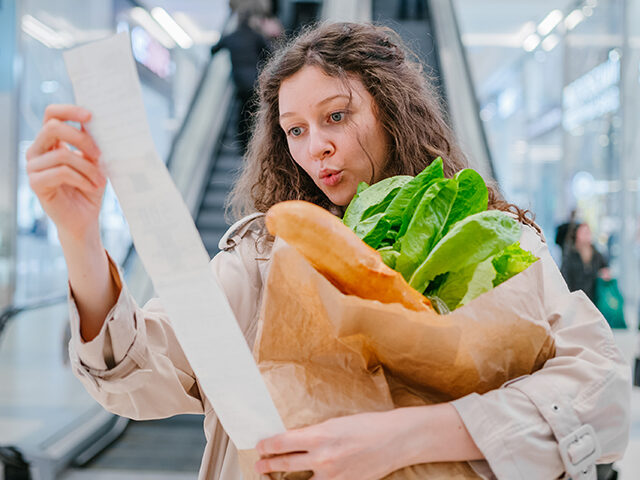Food prices surged in September, propelling the producer price inflation gauge higher than expected.
The Department of Labor said on Wednesday that its producer price index rose 0.4 percent compared with the prior month, twice what economists had expected. A big part of the gain stemmed from a rapid rise in food prices.
Consumer food prices rose a seasonally adjusted 1.1 percent compared with the prior month. Compared with a year ago, consumer food prices are up 12.1 percent.
Here are some of the biggest price jumps.
- Fresh and dried vegetables: up 15.7 percent for the month and 40.2 percent for the year.
- Grains: up 10.7 percent for the month and 30.4 percent for the year.
- Fresh eggs: up 16.7 percent for the month and 97.3 percent for the year.
- Bakery products: up 0.8 percent for the month and 14.0 percent for the year.
- Pasta: up 1.1 percent for the month and 34.1 percent for the year.
- Finfish and shellfish: up 2.5 percent for the month and 2.9 percent for the year.
- Processed fruits and vegetables: up 2.6 percent for the month and 16.0 percent for the year.
- Dairy products: down 1.6 percent for the month but up 18.2 percent for the year.
- Soft drinks: up 1.9 percent for the month but up 15.8 percent for the year.
- Pork: up 5.5 percent for the month but down 2.0 percent for the year.
- Fresh fruits and melons: down 1.2 percent for the month but up 20.7 percent for the year.
- Turkey: up 0.5 percent for the month and 38.2 percent for the year.
The Producer Price Index (PPI) resembles the familiar Consumer Price Index (CPI) that is the most commonly cited measure of inflation. Both track changes in prices over time and get released each month. Where CPI tracks prices paid by households for goods and services, the PPI tracks what domestic U.S. businesses receive for the things they produce. By definition, the PPI’s exclude prices paid for imports as those are not received by domestic producers. The food PPIs tend to lead CPIs, according to researchers at the Department of Agriculture. So today’s report suggests food prices measured by CPI are likely to continue to rise.

Not all food prices are soaring. Beef and veal prices fell for the second consecutive month and are down 23.0 percent. Fresh chicken prices fell 3.7 percent but remain 4.6 percent higher than the year ago level. Shortening and cooking oils fell 1.9 percent but are still up 12.4 percent from the year ago level.

COMMENTS
Please let us know if you're having issues with commenting.